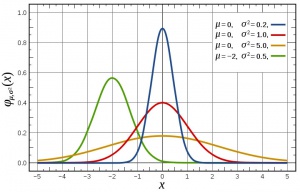Abnormal Development - Fetal Origins Hypothesis: Difference between revisions
mNo edit summary |
m (Redirected page to Abnormal Development - Developmental Origins of Health and Disease) |
||
| Line 1: | Line 1: | ||
#REDIRECT Abnormal_Development_-_Developmental_Origins_of_Health_and_Disease | #REDIRECT [[Abnormal_Development_-_Developmental_Origins_of_Health_and_Disease]] | ||
==Introduction== | ==Introduction== | ||
[[File:Normal distribution curve.jpg|thumb|Normal distribution curve (red)]] | [[File:Normal distribution curve.jpg|thumb|Normal distribution curve (red)]] | ||
Latest revision as of 12:24, 25 February 2014
Introduction
This and also previously Fetal Origins Hypothesis, now called Developmental Origins of Health and Disease" (DOHAD) is based on the early statistical analysis carried out by Barker of low birth weight data collected in the early 1900's in the south east of England which he then compared with these same babies later health outcomes. The theory was therefore originally called the "Barker Hypothesis" and has recently been renamed as "fetal origins" or "programming". Several origins have been suggested including: fetal undernutrition, endocrine (increased cortisol exposure), genetic susceptibility and accelerated postnatal growth.
More recently, discussion has occurred relating to how the data is both collected and analyzed, suggesting perhaps a smaller effect than original research suggested (see Lucas reference). Statistical methodology aside, these studies long-term periods of accurate data collection and we may have to wait some time for this research to develop.
